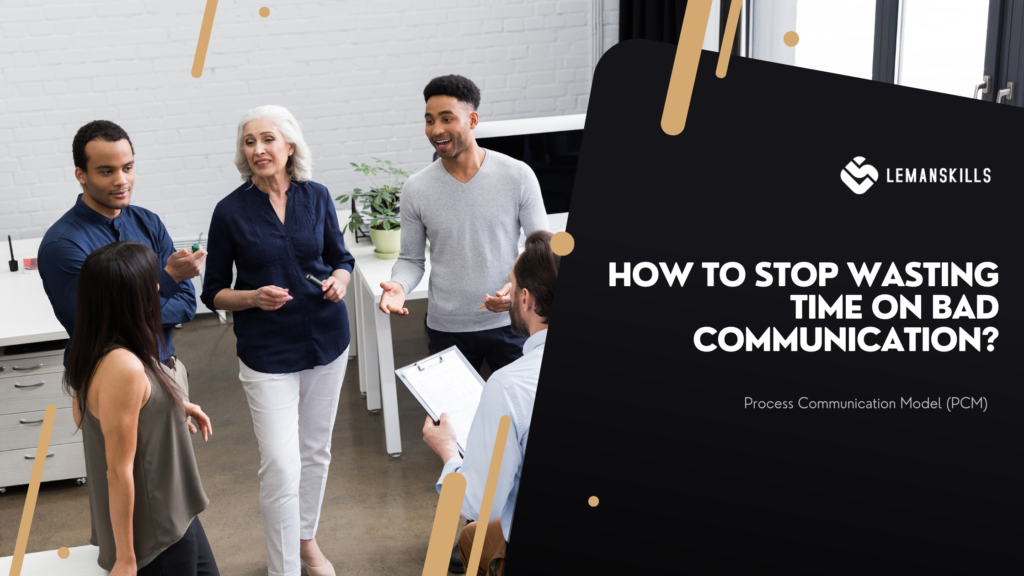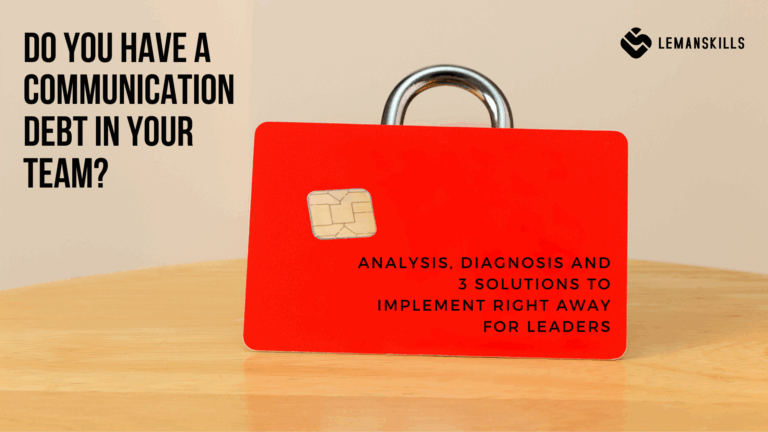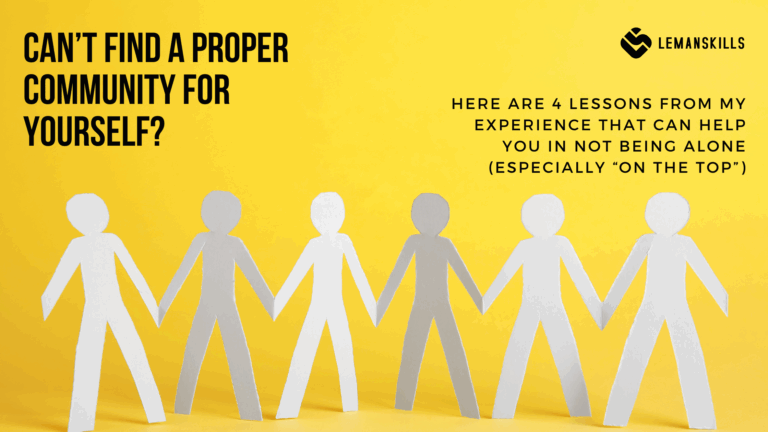Do you know the feeling when you discover something and you don’t believe that you didn’t know it before?
That’s the feeling that I had during my first Process Communication Model (PCM) workshop that I’ve participated in at the beginning of this year. I was familiar with few different psychometrics before (Gallup StrengthsFinder, Insight Discovery, DiSC, HBTI, FRIS, MBTI), but I’ve never experienced the tool that would be so to the point when it comes to describing the reality of different personality types. And what’s important as well: it adds the elements of stress (calling it distress) what is one of the most crucial things for the crazy world that we experience now.
I would like to give you few insights about what PCM is, how we can use it as individuals, managers, partners while being in the relationship, CEOs while being a head of a company or parents. It’s one of those solutions that can work on many different layers, in different contexts, life-roles or business areas. So adaptive, descriptive and insightful that it looks too good to be true.
What is Process Communication Model?
PCM is a structure of 6 Personality Types that are the base of how we think, act and communicate with others. It is a framework that can support people in their personal and professional lives in being more conscious about themselves (treating self-awareness as a start of every growth activity that we do). And when we are more aware of how we are constructed and what it means for us, we can learn more about how we communicate (in regular situations and under pressure). This knowledge will lead us to be better with others: our significant other, kids, friends, parents, as well as with our colleagues, employees, supervisors or clients.
One of the most beautiful things about PCM that I’ve discovered when I started to absorb its wisdom was that this a very structured, yet understandable way of describing how we operate, what we need when it comes to psychological needs, ways of communication (how we communicate when talking to others and what we need from others when they talk to us). And that it’s not the same thing. It seems quite obvious that there is no one-size-fits-all way of communicating with other people, but yet: we struggle with this process all the time. We learn and learn about this, we gather knowledge, tools, we practice during training sessions and workshops, but we make mistakes all the time. There are conflicts, misunderstandings that make our life miserable, not efficient or effective the way we want it to be.
That’s where PCM comes, all in white.
The 6 Personality Types
PCM includes 6 Personality Types within its structure. If you know different psychometrics and questionnaires, you might be interested in 2 things that I found in this one that makes this tool special:
- There is no introvert / extravert differentiator within the method; it means that it’s less biased, for me for sure more immune to put people in certain boxes with a big risk of being outside of OK-OK quadrant in the OK-OK Matrix;
- Taibi Kahler, who is an author of PCM stated that on which “floor” of the house a certain type of personality lands, is not going to change after approx. the age of 6 years old; so once it’s set, the order is fixed (an easiness of access to the higher floors can be different, but the order itself is not going to change).
Here’s the visual of how the structure of PCM can looks like with the names and key words connected with each type. Let’s dig deeper into the description of them, so you have the idea what they are.

PERSISTER is a person that is observing the world through the lens of values and opinions. They operate with a structure of their belief and values system, they have a strong opinion on every subject. When they start doing something, they are fully committed to finish it. It’s impossible for them to even think about not deliver if they promise to do it. The trust is what they value, until somebody proves them otherwise.
THINKER is a person that uses data, facts, logic, information to connect with the world that is around them. They use thinking as a base of their decisions, problem solving activities, even building relationships with other people. What can’t be prove, doesn’t have a right to exist. They connect the dots, looking for the logical sequences, connections between things and answer the questions that will make more sense to them.
PROMOTER is a doer. Their perception is full of activities, actions, making things happen. They need stimuli to keep their momentum going. Experiencing things is their way of learning, being able to thrive and being effective and efficient. They don’t like to wait and talk too much: “instead of talking, let’s do some action” or “less talking, more doing”, they say.
REBEL is a person that needs to be in contact with others. Their perception is to enjoy things, have fun in life. They need reactions (theirs and others) to feel that they are alive and in a good place to fulfill their destiny. Being creative, spontaneous, full of energy: that’s what describes the Rebel the best.
HARMONIZER uses emotions to experience the world that is around them. How they feel about certain situations, decisions or people is their compass to make further steps. They value other people, relationships and family: those are their main points of focus and a touch base while making any decisions.
IMAGINER uses the world of reflection. They imagine different scenarios, options, possibilities and they dig deep into those inside of themselves. They need time and space to be in their world and they have a rich internal life that is in their bodies and minds.
One of the most important thing in PCM is to understand that each person on the planet has all of the types inside of them. It’s impossible to have none of a particular type. They are just in a different order and we have different access to the higher floors of our personality structure. It all depends on how we were raised (since the order is fixed since the age of 6 years old), what kind of environment we experienced in the past and we are have in our life now. It depends on all of the experiences we gathered so far, and what we have learned about ourselves and the world.
Where can I use PCM in my life?
Once you fill out the questionnaire and have a report, you will have a chance to have conversation with a certified PCM Practitioner who is going to explain you more about the essence of the framework and how it’s applicable to your particular case. You are going to talk about the order and intensity of each type in your individual structure, as well as the insights about what happens to you under stress and in relations with others.
Where exactly can you use PCM?
- First of all, it’s a tool that will allow you to understand yourself better: your construct, thoughts, behaviors, decision making processes, ways of communicating with others (how you communicate and how you want to receive communication from others);
- It’s a stress management tool: it describes how each type reacts in 3 phases of distress and what happens if you’re not stopping it in the right time;
- If you are a manager, leader, director, CEO: it’s a tool that allows you to understand and lead people better, because you are going to be more aware of WHY people behave the way they behave;
- If you are in a relationship: having 2 reports (yours and your significant other) you can understand the flaws in your communication and why the other person drives you crazy sometimes (and the other way around);
- If you are a parent: you can understand behaviors or your children better and adjust your parenting style, so you come back to OK-OK zone more frequently;
- If you are a trainer, coach, mentor: you can use this tool to support your clients better, since communication is a #1 thing that is a root cause of many different issues that people have, stuck with or are in an impasse and don’t really know what to do next.
The list is not fixed. PCM is a great, universal and adaptive tool that can help you in many different ways and areas of your life. If you want to be a better person: for yourself and for others, it’s an amazing step that you can go with to improve your contact with the world. Communication is present in every single situation in our life, regardless of the moment where you are on your journey, your age, years of professional experience or social status. We are always in the communication with others: in person or virtual, written or spoken. More or less polite and friendly. We don’t enjoy it all the time, frankly: sometimes we don’t enjoy it at all. PCM is the way that we can enjoy and make it efficient way more than we did in the past.
How to get to know more about PCM?
You can contact myself to get more information about the tool if you get intrigued after reading it. You can also look for more information in other sources available globally HERE or HERE. As I mentioned at the very beginning of the article: I never saw that well-designed, connected to the people’s mind and soul tool that supports us in the process of growth.
I hope it’s going to inspire you to get more knowledge about it, get your feeling and make one step forward into the future of higher awareness and better communication with others. It’s worth it.




